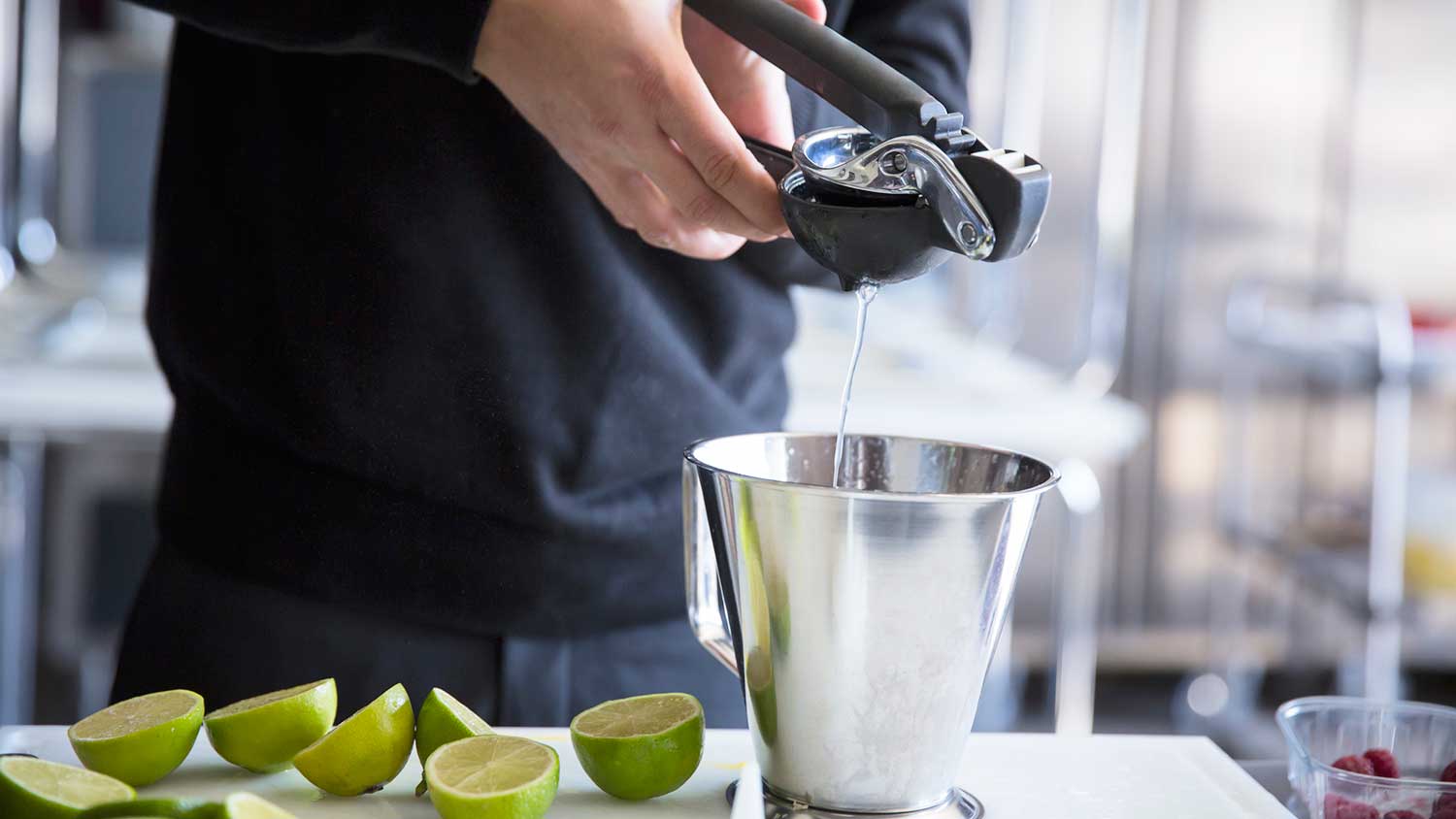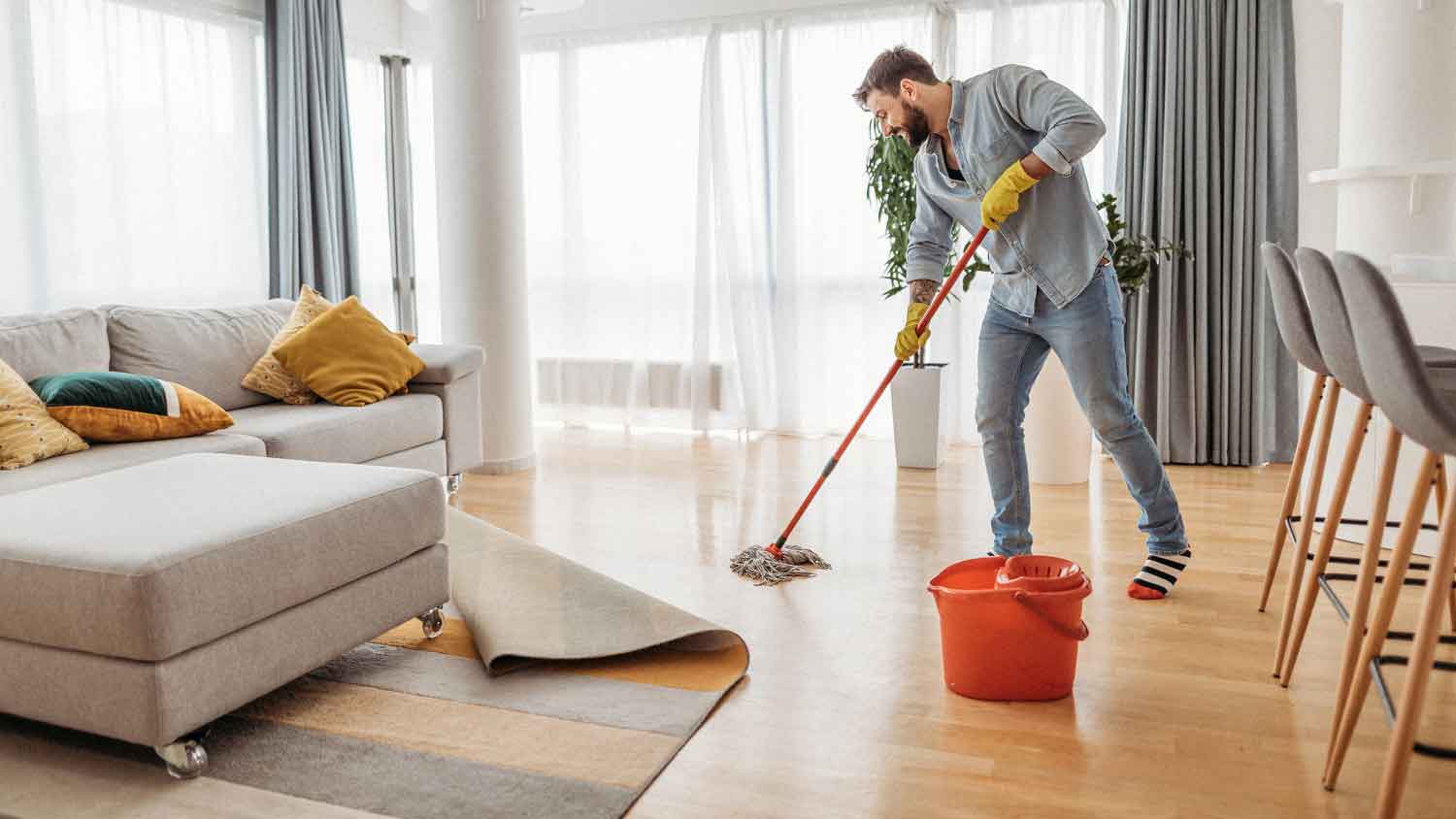How To Remove Rust From Stainless Steel: Transform Your Appliances and Cookware
Rust is no match for our easy at-home polishing remedies


If your once-shimmering stainless steel appliances, sinks, and cookware have a sheen of reddish-orange, the likely culprit is rust. Luckily, you can learn how to remove rust from stainless steel using simple household items. Our guide will show you how to quickly and efficiently remove stubborn rust stains from your favorite stainless steel appliances and homewares.
Why Do I Have To Remove Rust From Stainless Steel?
You’ll want to clean rust off stainless steel to keep your appliances, sinks, and cookware fresh, clean, and performing well. Not to mention, you don’t want to risk adding rust to your favorite meals!
Although stainless steel may appear iron-clad, according to the United States Geological Survey, stainless steel contains 18% chromium–the outer layer that toughens steel against rust and corrosion. So once that chromium layer dissolves, stainless steel will begin to rust. Yet, there’s very little reason to worry—you can polish stainless steel back to its original state in no time.
How to Remove Rust From Stainless Steel

You can get rust off stainless steel by using items commonly found in your pantry—baking soda, lemon juice, vinegar, and cream of tartar. Although, if your stainless steel appliances are very rusty, you might need to break out something stronger, like oxalic acid or a store-bought cleaner.
Of course, you always want to check your appliance’s user manual to ensure you choose the right cleaning products.
Sprinkle Baking Soda on Large Surfaces
Rinse your stainless steel countertops or sink basin, leaving the surface damp.
Generously sprinkle baking soda to coat the rust stain.
Let the layer of baking soda sit for at least 30 minutes to 1 hour.
Grab a soft bristle brush and scrub the area until the rust comes out.
Rinse the area with warm water and dry it with a soft, clean cloth.
Pro tip: When cleaning a stainless steel sink, avoid metal scrubbing pads or brushes—as the metal will scratch and damage stainless steel. Instead, always opt for a soft cleaning cloth or brush.
Make a Baking Soda Paste
Mix 2 cups of water and 1 tablespoon of baking soda to make a paste.
Take a soft, clean cloth and rub the paste onto your stainless steel appliance, always going with the grain.
Apply pressure as needed.
Take a damp cloth or paper towel and gently rinse the paste until clean and rust-free.
Apply a Vinegar Spray
It’s important to note that white vinegar may not be as powerful as other household items, such as baking soda. So, you’ll only want to use vinegar for mild rust stains.
If you have a bunch of rusty stainless-steel utensils, you can soak them in a tub filled with white vinegar overnight—that should do the trick and remove rust.
Fill a spray bottle with undiluted white vinegar.
Spray the affected area.
Take a soft cleaning cloth and rub the affected surface until rust-free.
Rinse with warm water and dry with a clean cloth.
Mix Dish Soap and a Potato
Believe it or not: Potatoes can be a helpful tool for removing rust stains. Take one out of your pantry and use its oxalic acid to your advantage.
Cut a potato in half and pour liquid dish soap onto the cut end.
Take the potato and rub the affected area, making sure to go with the grain.
Leave the potato on the rusted spot for a few hours.
Remove the potato and buff the area with a wet cloth or sponge.
Rinse with warm water and dry with a clean cloth.
Create a Cream of Tartar Paste
Mix 1 tablespoon of cream of tartar with a few drops of lemon juice.
Apply the paste to any rusty spots on your stainless steel appliances.
Take a soft cloth or sponge and rub the rust stains with the paste until rust-free.
Rinse the remaining paste with warm water and dry with a clean cloth.
Make a Lemon Juice Paste
Make a paste by mixing equal parts baking soda and lemon juice.
Cover the entire affected surface area with the paste.
Take a damp sponge or cloth and buff out the rust.
If that doesn’t do the trick, apply another layer of paste and let it sit for at least 30 minutes before buffing it out again.
Rinse with warm water and dry with a clean cloth.
Mix Lime Juice and Salt

Create a paste by mixing equal parts lime juice and salt.
Apply the mixture to the affected area and let it sit for at least 1 hour.
Scrub the rust with a clean cloth.
Rinse with warm water and dry with a clean cloth.
Use Oxalic Acid
Sometimes, rust stains need a more powerful cleaning tool. You can purchase a cleaner with oxalic acid for around $10 at a hardware store.
Put on rubber gloves and safety goggles, and make sure the room is properly ventilated.
Dissolve the oxalic acid powder in water.
Apply the oxalic acid cleaner onto the affected surface using a soft cloth.
Take a soft sponge and rub the cleaner with the grain on the appliance.
You may need to rinse, reapply the cleaner, and scrub the surface a few times to remove stubborn stains.
Rinse your appliance with warm water and dry it with a soft, clean cloth.
How to Prevent Stainless Steel Appliances From Rusting
You’ll want to implement a daily cleaning routine to ensure your stainless steel sink, appliances, and cookware remain looking new and polished. Once per day, take a mild soap or detergent, mix it with warm water, and gently wipe away smudges or stains with a clean, damp cloth.
Other ways to prevent stainless steel from rusting include:
Avoid using abrasive cleaners with chloride and bleach, as these will strip the chromium finish off stainless steel, making them more susceptible to rust.
Don’t use steel wool pads or brushes for cleaning. These tools are abrasive, and you’ll have to remove scratches from stainless steel appliances.
Clean up spills immediately—stainless steel appliances don’t mix well with lingering moisture.
Don’t leave stainless steel pans or utensils soaking in water for long periods.
DIY vs. Hire a Pro
You can remove rust if you have the necessary household cleaning items and the time and commitment to scrub your appliances. Otherwise, you can hire a cleaning service near you to tackle the job. House cleaning pros cost between $30 and $50 per hour, and you should plan on adding extra time for tough rust stains.
Frequently Asked Questions
The fastest way to remove rust from stainless steel is mixing baking soda and water. Since baking soda is mildly abrasive, you can add some serious elbow grease while scrubbing without worrying about scratching your appliances. Vinegar and lemon are acid-based and can also quickly remove rust from stainless steel. If your baking soda paste needs a boost, we recommend adding vinegar or lemon juice.
Although stainless steel is highly resistant to corrosion, certain things can make it rust. As stated above, when the chromium layer dissipates, rust will follow.
Stainless steel can rust from:
Using the wrong type of cleaners (bleach, chlorine, ammonia)
Using abrasive scrubbers that strip chromium
High-humidity environments
Moist air environments





- How to Clean Stainless Steel Appliances and Make Them Sparkle
- White Appliances vs. Stainless Steel Appliances: A Complete Comparison
- How to Paint Stainless Steel and Make It Stick
- Black Stainless Steel Sink Pros and Cons: What to Know Before You Buy
- How to Remove Scratches From Stainless Steel Appliances in Under 25 Minutes
- How to Get Hard Water Stains off Your Stainless Steel Sink—Once and for All
- How to Remove Rust From Metal Using Household Items
- What’s the Difference Between a Composite Sink vs. Stainless Steel Sink?
- 5 Easy Tips to Remove Stubborn Rust Stains in a Flash
- 5 Ways to Remove Rust From Your Bathtub









